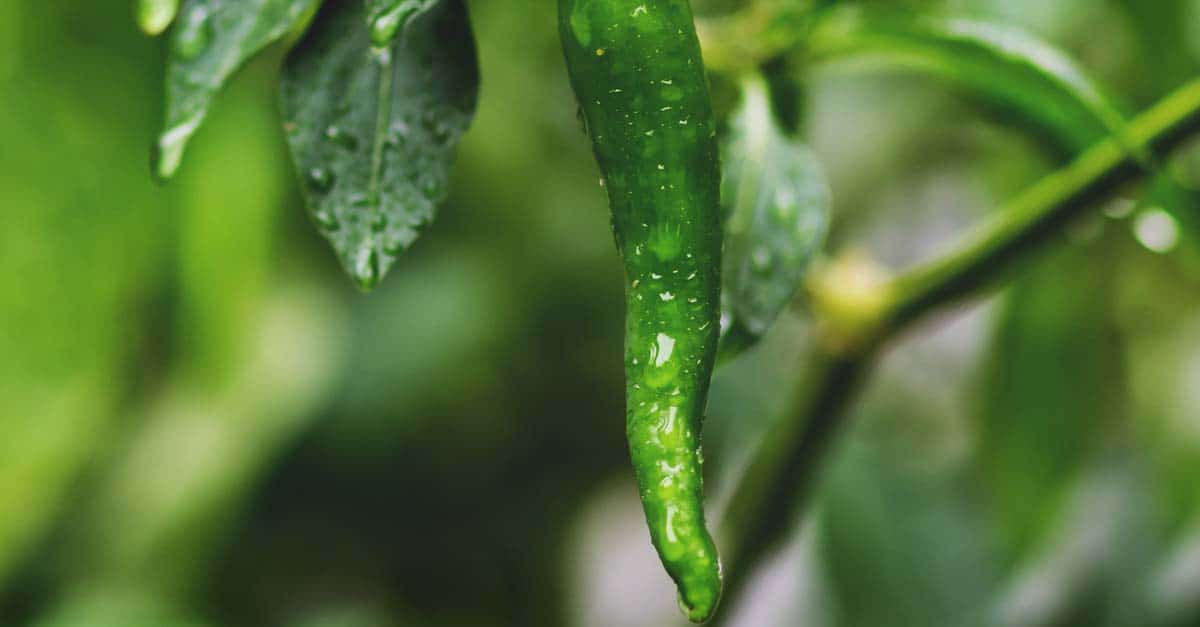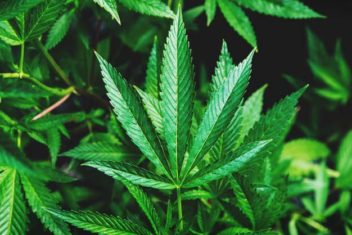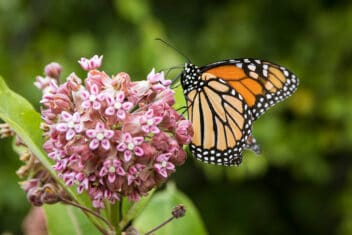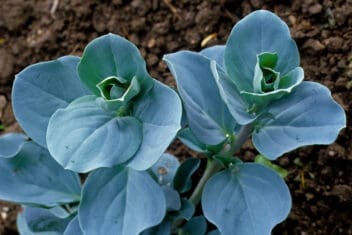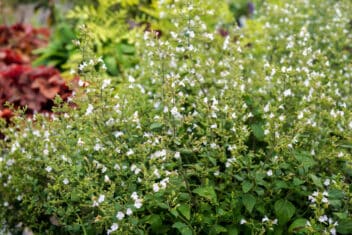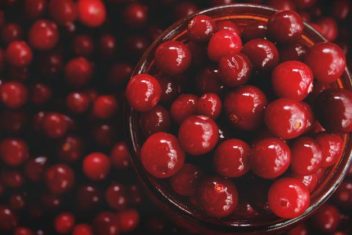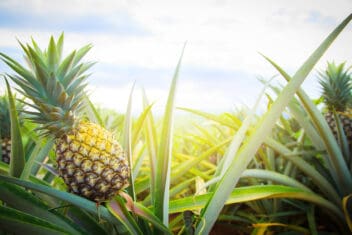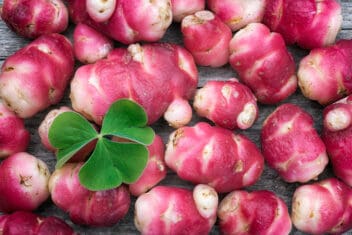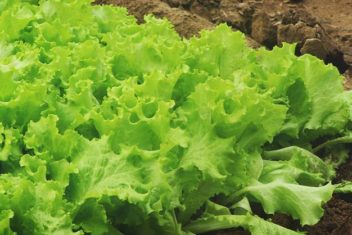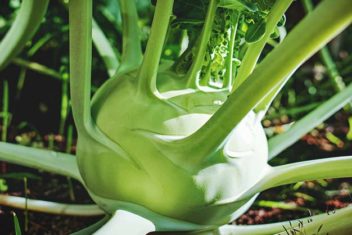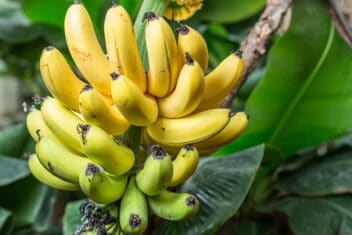I lived on Maui for a year in my early twenties. It was a paradise on earth in many ways. One of my favorite things though was a little neighborhood grocery store across from my apartment. It was stock full of many exotic foods I’d never heard of before.
That’s where I first met “gotchu”. The universal English language spelling for Korean peppers is now “gochu”. But back then, this popular pepper wasn’t regularly featured in internet searches. In fact, it was barely known in the US, so I think the grocer just took a guess at how to write it in English.
Now, gochu is so well known, you can even find plants and seeds to grow at home. Thank goodness for that! Because once you get to know all about these amazing Korean peppers, you’ll want to grow plenty to make gochugaru (dried and flaked spice), gochujang (fermented pepper sauce), or authentic kimchi (fermented cabbage condiment)(fermented cabbage condiment) on your homestead.
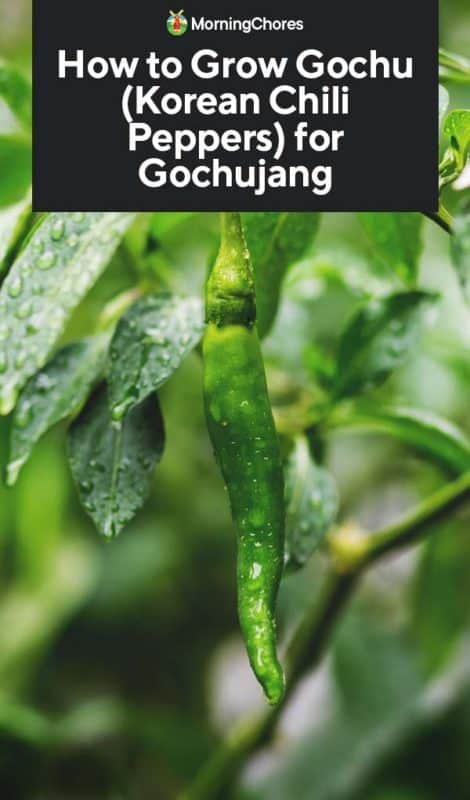
Gochu Varieties
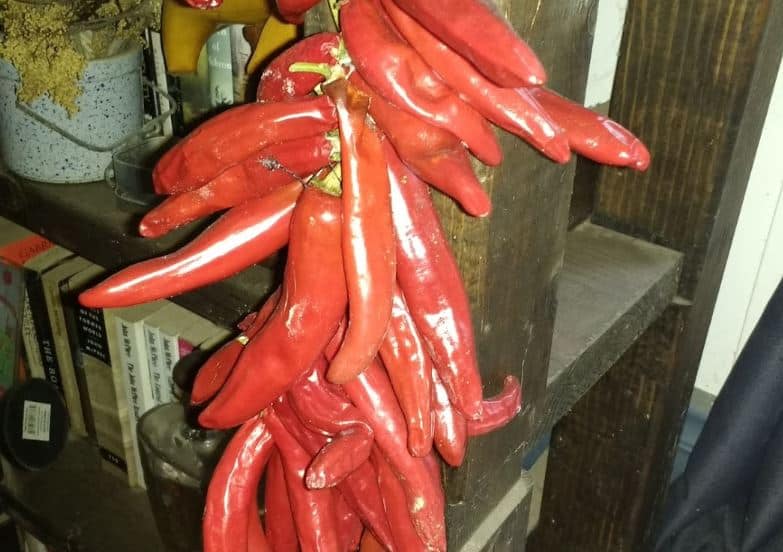
Gochu (고추) is really just an Anglicization of the Korean word that means “pepper”. So, gochu are technically Korean peppers.
That term gochu is used to describe all sorts of heirloom and hybrid peppers grown and used in Korea rather than a particular variety. However, most Americans use the term gochu to refer to what Koreans call Hong Gochu.
1. Put Gochu and Hong Gochu
According to bburi kitchen, a Korean cooking website, Put gochu (풋고추) and Hong gochu (홍고추), are words for the chilies used to make gochugaru. Gochugaru is the chili powder in the hugely popular fermented gochujang paste and what is used to season many Korean culinary dishes.
Put gochu is what the peppers are called when they are young, green, and used fresh similar to bell peppers. Hong gochu is what the peppers are called when they are red and ready to harvest to dry for gochugaru.
These Korean peppers are slightly sour, tangy, and sweet but not super hot. According to some people, the Scoville rating for these should be 1000 or less. However, there are others who say the Scoville rating should be between 1500 – 10,000.
In my experience, all the hong gochu I’ve grown are less spicy than jalapenos. Hotter versions may have been cross-pollinated with other peppers. The dried, flaked, or powdered versions of this pepper are also sometimes called “taekyung” or “taeyangcho” when bought online or from Korean grocery stores.
These are essentially a style of Korean peppers that are used similar to paprika in European countries like Spain and Hungary. They can be used fresh, but their fast ripening habits and thick skin make them better to use dried and flaked or powdered.
You can find the seeds for sale under lots of different names such as Korean paprika, Korean kimchi peppers, Korean long pepper, Korean hot pepper, and more. The key is to look for descriptions that say the variety is used to make gochugaru or that they are ideal for drying.
2. Ggwari gochu
Ggwari gochu (꽈리 고추) is the Korean name for the peppers we call Shishito when we grow them in the US. These tend to be a little wrinkly and can range from mild to slightly spicy. They are ideal for fresh eating and fire roasting.
3. Cheongyang gochu
Cheongyang gochu (청양 고추) is the word to describe the spiciest Korean peppers. It’s hard to find seeds for this Korean pepper in the US. If you do, they are usually sold under their Korean name Cheongyang gochu.
Gochu Trivia
Before we move on to how to grow gochu at home, I want to share with you a bit of gochu trivia. Technically, gochu is a member of the Capsicum annuum family that just about every sweet pepper or slightly spicy pepper on earth falls into.
It is generally believed that this pepper family started in South and Central America and was spread around the world by Portuguese traders. However, some Korean researchers say Korean gochu may have arrived on the Korean peninsula through natural methods (e.g. carried by birds) billions of years before the spice trade routes existed.
They believe that the Korean gochu are so genetically distinct from other chili peppers around the world that they must have evolved separately in the colder Korean climate. While not everyone has accepted this perspective, I can tell you from experience there is something distinctly different, especially about Hong gochu, from any other drying chili pepper I have grown.
How to Grow Gochu Peppers
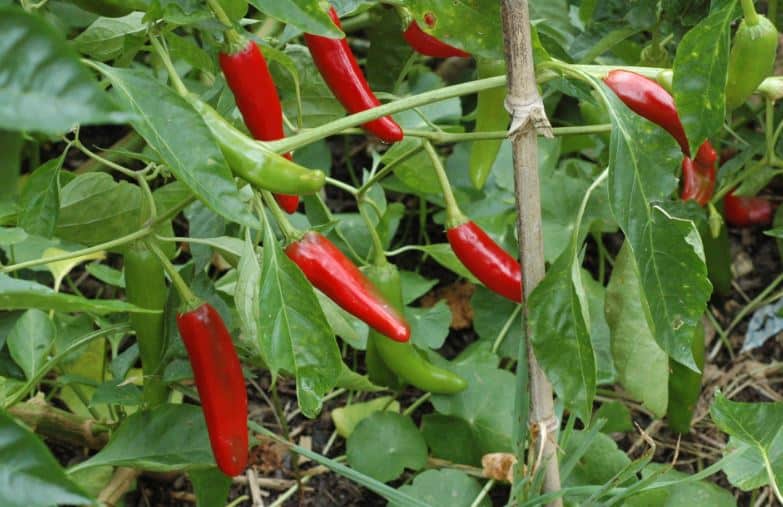
Regardless of where these tasty peppers evolved, they are still grown very similarly to other chili peppers.
Zones
Gochu can technically be considered tropical perennials. However, they are almost always grown as annuals. They require about 75-80 days of warm weather to mature. Then they will continue to produce for several months until cold weather or production fatigue stops production.
Most people start gochu indoors in February through April and transplant them outdoors when temperatures are consistently above 70°F. Grown this way, gochu can be planted in USDA zones 5 and up.
Sun Requirements
Gochu grow best in full sun. However, they can also tolerate a little afternoon shade.
Soil Requirements
Goch love soil that is well-draining and somewhat light in texture. Any soil amended with compost and some sort of soil conditioner like leaf mulch, peat, or gypsum (for clay) work well. Peppers grow best with a soil pH of 6.0 to 6.8 for the best results.
– Special Instructions for Sandy Soil
For sandy soils, in particular, you’ll need to make sure the soil has plenty of micronutrients available throughout the growing period to avoid diseases.
Adding rock dust with your compost and using a little kelp fertilizer during the growing season can help ensure sufficient mineral content in sandy, fast-draining soils.
– Nitrogen Know-How
If you have too much nitrogen in your soil, pepper plants will put out a lot of leaf growth but not much pepper production. Instead of using a generic fertilizer something like a 10-10-10, apply several inches of compost.
Also, use worm castings or chicken manure in with your compost. Plus, water weekly with a low nitrogen compost tea as your soil fertility source for good pepper production.
When to Plant Gochu
In climates with long warm growing seasons, you can direct plant your peppers outdoors. However, in colder climates, you’ll need to start them indoors in early spring or late winter for best results.
Peppers are very slow to start then pick up pace after about 60 days. I typically start mine indoors as much as 2 months before I plan to put them outside. I start them in 4-inch pots so I don’t have to pot up before I transplant them.
Harden your plants off for 7-10 days before transplanting. Or, cover them with 70% light allowing row cover for a week after planting.
Do not plant outside until air temperatures are consistently above 70°F and soil temperatures remain above 60°F or young plants will become stressed and stunted.
Container Planting
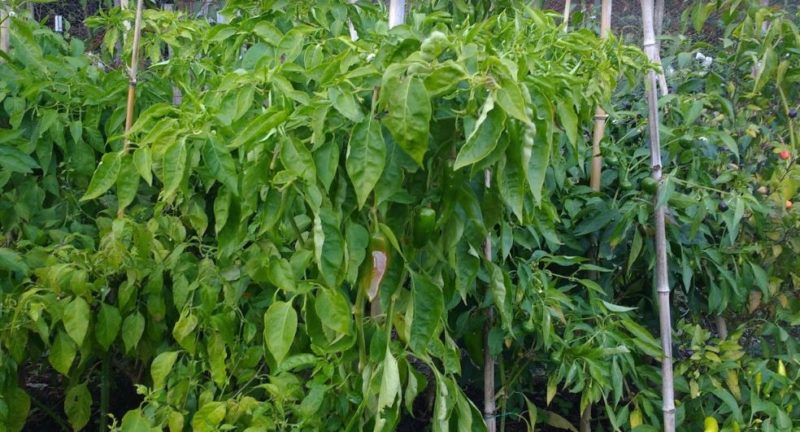
Chili peppers, in general, grow well in containers. However, I have to warn you, my hong gochu has gotten as tall as 4.5 feet and branched over 3 feet wide. So, they don’t make the best choice for a small house pepper.
I also find them much more productive when grown in the ground. Also, they can get so heavy with peppers that they require sturdy staking.
Germinating Seeds
If you start seeds in good light with 70-80°F soil temperatures, such as by using a seed warming mat or in a heated space, germination takes about 3-7 days. In cooler or more irregular conditions, seeds may take several weeks to germinate.
Seeds should be planted at a depth of ¼ – ½-inches deep to keep them from floating up when watering.
Spacing
When transplanting outdoors, plant on 18-inch diameters. Or, plant 12 inches apart on 2-foot rows if you want to stake them in a line.
Dig your transplant hole an inch or two deeper than your plant root depth. Bury part of the stem in the soil. That will encourage roots to grow on the stem (like tomatoes) and will provide more root stability for your mature plants.
Cross-Pollination
Gochu are completely self-fertile. They don’t require insect pollination or cross-pollination to produce peppers.
Unfortunately, they are still known to easily cross-pollinate with other peppers, particularly hot peppers. If this happens it will change the flavor of your first-year peppers. Plus, peppers grown from those cross-pollinated seeds may not produce true to type.
To reduce the risk of cross-pollination, plant gochu at least 50 feet away from other sweet peppers and 150 feet away from other hot peppers. Also, grow completely unrelated plants between those distances to act as barriers to reduce cross-pollination risks.
Caring for Gochu
Gochu are quite easy to care for as long as you grow them in good garden soil with a lot of organic matter (e.g. compost). Here are a few extra details to help you get the best yields.
1. Fertilizer
As I mentioned in soil requirements, gochu doesn’t need a lot of nitrogen. But they do benefit from fair amounts of phosphorous and calcium.
I work a tablespoon of bone meal into my planting hole before transplanting to make sure I have phosphorous at the root zone. This contains lots of calcium as well.
I also like to water weekly with a mix of 1 part whey to 9 parts water to ensure water-soluble calcium is available when plants are flowering and forming peppers. Skim milk also works if you don’t have whey.
2. Watering
Young plants need weekly watering. Using sun-warmed water is best especially until air temperatures are consistently at or above 80°F.
Mature plants will have deep root systems that get water several inches below the surface of the soil. So, once plants are two feet tall, only water when your soil is dry more than an inch below the surface.
3. Mulching
Peppers love dark mulches like leaf mold or double-shred hardwood to help keep the soil warm.
Common Problems for Gochu
Gochu, when raised in ideal conditions, have very few pests or pathogen problems. Here are a few things to be aware of though.
1. Insect or Plant Eating Pests
Healthy gochu plants have their own immunity to insect pests and plant-eating herbivores. The leaves are not particularly tasty. The capsaicin in their fruits is also a natural deterrent for most insects and fruit-eating pests.
Gochu can even be ground up, like cayenne, added to water and sprayed on other plants as a homemade insecticide. As such, most pest or pathogen problems are simply a sign that you need to adjust your plant care methods.
Solution
If your peppers are suffering from pest invasions, the first thing to check is their general health. Do the leaves show any signs of discoloration from mineral deficiency? Is the soil too wet or dry? Are plants properly spaced and staked for good airflow?
If these things are on track, and you still have issues, since peppers are self-fertile, you can safely treat pest problems with neem oil or insecticidal soap. Or hand pick large insect pests like the tomato hornworm.
You can also remove infested leaves or branches as long as your plant has plenty of leaf growth left to support the root system.
2. Brown Marmorated Stink Bug

The one insect pest that doesn’t fall under the general instructions above is the Brown Marmorated Stink Bug. It seems to be completely immune to the capsaicin in the peppers.
It also tends to eat just a little bit of each pepper and then move onto another. So, if left unchecked, they can ruin a fair number of your gochu.
Solution
Luckily, these bugs are slow to react when disturbed during eating. As such, you can simply knock them into a bowl of water. Then, take them to your chickens, ducks, or turkeys as a tasty treat. In small quantities, they won’t affect the egg flavor.
3. Pathogen Problems
Peppers can also be susceptible to a few soilborne pathogens. Blossom end rot is a problem with insufficient calcium. This can be easily avoided by adding sufficient calcium in your soil at the time of planting and making sure your soil pH is in the 6.0 – 6.8 range.
Fusarium wilt and Mosaic viruses can also be an issue if you use infected plants or have these pathogens present in your soil. If they are a problem in your garden, then you’ll want to plant peppers elsewhere or take steps to mitigate the problems prior to planting.
A few bacterial diseases like bacterial leaf spot may also impact your gochu production. Generally, though, like most fungal pathogens, prevention is key. Crop rotation, using organic gardening methods, and controlling pathogens with cover crops is critical to a healthy garden.
There is one pathogen that you may encounter during the growing season and that’s powdery mildew.
4. Powdery Mildew
Powdery mildew affects a broad range of plants including gochu. It can discolor leaves limiting proper photosynthesis and make the peppers unattractive for eating. It can also reduce crop production.
Solution
There are a few homemade remedies known to be effective in the reduction of powdery mildew on pepper plants. Whey or non-fat milk sprays and actively aerated compost tea are two that work well for me.
Some people also use sodium bicarbonate, a.k.a. baking soda. However, as the name implies baking soda is sodium-based. If used regularly, those salts can accumulate in the soil and too much sodium can lead to poor vegetable production. As such, potassium bicarbonate is a better option in an organic garden.
Companion Plants for Gochu
Like other chili peppers gochu will grow well with any of the following plants:
Best Veggies
- Carrots or Parsnips
- Other Nightshades (Eggplant, Tomato, Ground Cherry)
- Beet Family (Beets, Spinach, Chard)
- Allium Family (Onion, Leek, Garlic, Shallots, Scallions)
- Asparagus (after spring harvesting period ends)
Best Herbs
Worst Companions
Peppers can cooperate well with most plants. However, since they are warm-weather plants, they usually aren’t grown with cold-weather plants such as anything in the brassica family (cabbage, kohlrabi, mustard, turnip, etc).
Also, you don’t want to grow gochu right after legume cover crops planted for nitrogen fixation or they might get too much leaf growth from the excess nitrogen.
How to Harvest and Store Gochu
When to pick your gochu depends on whether you want to use them fresh or for drying.
Fresh Use
For fresh use, aim for picking when the peppers look plump and glossy and are either bright green or red. If the color becomes a deep red, then the meat of the pepper is usually past prime for fresh use.
Use peppers within a day or two of harvest. Or, refrigerate in your crisper drawer for up to 2 weeks. Alternatively, cut and freeze fresh peppers in plastic bags if you can’t eat them right away. No need to cook first.
Dried Gochu
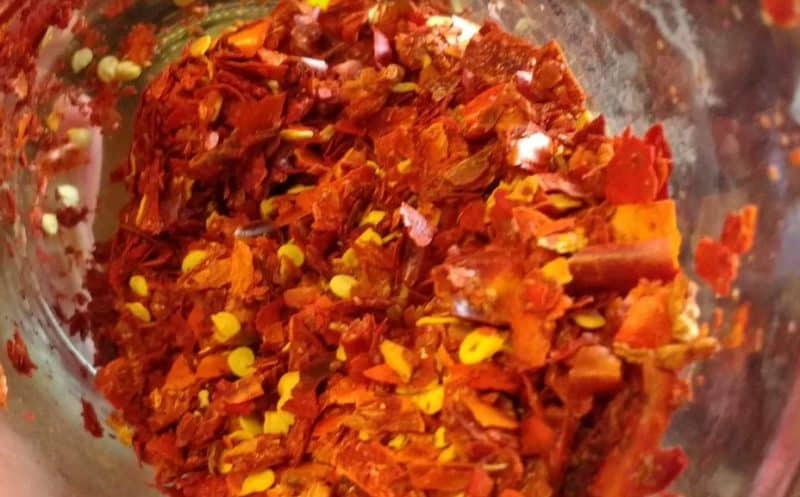
When harvesting gochu to dry, I wait to harvest until the color fully develops to deep, almost purplish-red and the skin appears just slightly papery. Then, I string the gochu using an upholstery needle and an all-purpose thread.
After that, I just hang them in a dry, warm location out of direct sunlight until they are ready to powder. Remove the seeds before powdering if you want them less spicy. Or leave them in if you don’t mind a little more bite and are lazy like me!
Dried or powdered gochu can be kept for a year or more if stored in airtight packages. Once exposed to air, use within a couple of months for peak flavor. Or, use it to make gochujang.
Conclusion
I still savor the day I met “Gotchu” which I now call gochu. This amazing Korean chili pepper is a favorite in my potager garden, in my spice collection, and as the key ingredient in the homemade kimchi and gochujang I make at home.
Don’t worry though. If you aren’t yet acquainted with this powerful pepper, you don’t need to live in Maui or go to Korea to get them. Now you know everything you need to know to grow your own at home!
